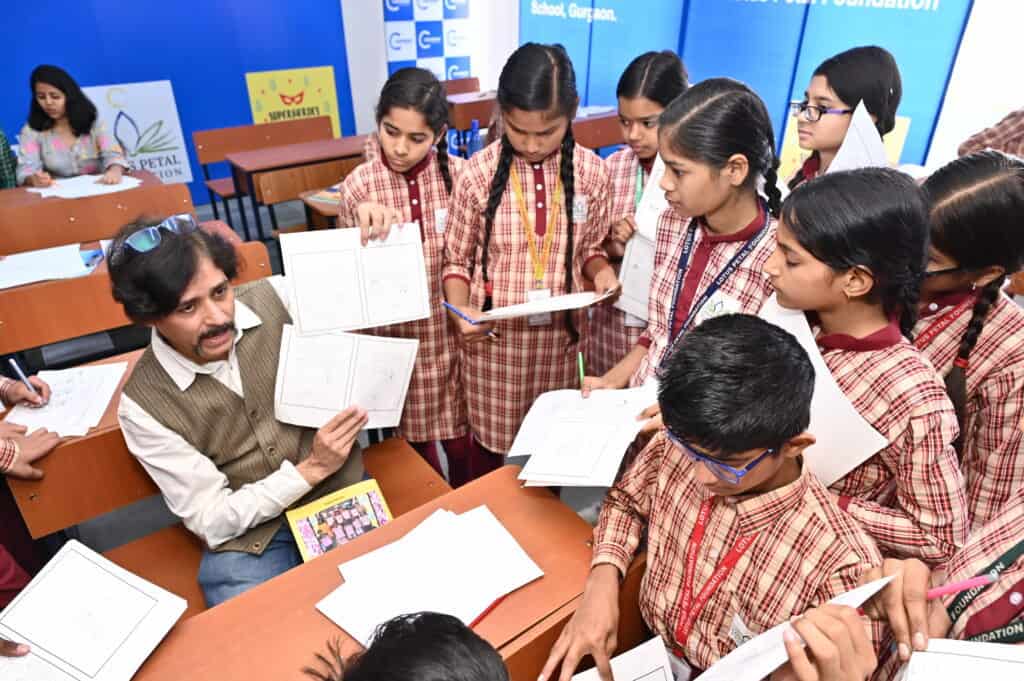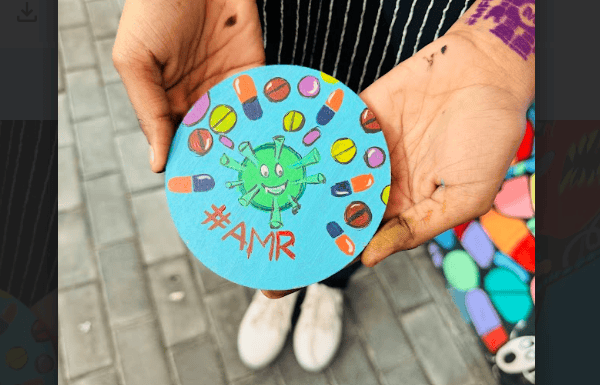This post was originally published in TeacherPlus.
Come summer and my dearest memories are of the comics I got during my train rides when we travelled to my native village in Bengal from Mumbai. The colourful, simple stories with banter, laughter, and adventure made it easier to distract myself from the rather long and tiresome journey. It was also in these comics that I could see people of the world in very plain terms – their likes and dislikes, struggles and wins, biases and prejudices.
I wondered if similar stories could also be utilized to un-complicate an urgent health problem called AMR (Anti Microbial Resistance) – a problem that’s sweeping across the globe and yet stays out of public conversations?
AMR is a situation where antimicrobial drugs such as antibiotics are not effective against the disease-causing microbes they are supposed to kill. Such microbes are called drug-resistant microbes or simply superbugs. AMR today, thanks to these superbugs, has reached the scale of a pandemic. It kills an estimated five million people a year globally, and India is the hotbed of this issue. Then why is it that most of us don’t know about it?
The simple answer is because it’s a very complex problem.
One, unlike the COVID-19 pandemic, AMR is not caused by one microbe, manifesting one disease. Antibiotics are not working against bacteria, antifungals are failing against fungal infections, and so are antiparasitic drugs against parasitic infections. Two, AMR is a result of the natural process of microbes evolving; one that cannot be avoided altogether. Hence, there is a sense of inevitability to the problem. Three, AMR or the rate at which microbes are evolving can be slowed down by reducing the prevalence of antimicrobial drugs in our environment. But there are many stakeholders who have to play their roles to ensure this. And therefore, it becomes easy for each one to think that it’s not within their personal capacity to deal with the issue. Fourth, despite the huge number of AMR-related deaths, death certificates do not mention AMR as the cause of death. Instead, they record immediate reasons such as organ failure. And thus, AMR seems like an invisible and unrelatable problem that appears only in scientific and medical journals.
Could stories help people break down the complexities of AMR into small pieces that relate to their lives? Driven by this question, Sarah Hyder Iqbal and Ponnari Gottipati, both life scientists turned science communicator and research manager respectively, initiated the ‘Superheroes against Superbugs’ initiative. They wanted to reach out to young people because this fast-growing problem will hit them the most in the coming decades. This is when I joined the team, and we started working with high schoolers to enhance their awareness of the problem.
While we wanted to start with their existing understanding of microbes, we also wanted to highlight different ways of reducing the use of antimicrobials and thus slowing the spread of AMR. This included the importance of sanitation and hygiene to avoid infections, taking antimicrobials only when doctors prescribe them and finishing their entire course. We had many hands-on interactive activities and discussions with experts to understand the science behind AMR. But we didn’t want these to just stay as classroom activities with no relevance to their real lives. We also did not want to hand them another set of many guidelines. We wanted the participants to build their own narratives of hygiene, antibiotic use, and misuse. And we wanted these narratives to be made as stories of fun and adventure, where the makers see themselves as superheroes.
Superheroes and comics go hand-in-hand. Sharad Sharma, founder of World Comics India, introduced us to the format of grassroot comics. This format has enabled many marginalized people to tell their stories in the way they want to. They designed their own characters and wrote in languages they speak in. And these comics, unlike the colourful ones that most of us are used to, are in black and white. But, they are equally captivating, thanks to the simple and crisp storylines, playful language, and design elements.

Mr Sharad Sharma with students at a SaS’ AMR grassroots comics workshop
With Sharad introducing the participants to basic design tricks and the Superheroes against Superbugs team ensuring the science depicted in the comics is right, the participants were set to design their own comics, inspired by their own lives and takeaways from the workshop. Comics that they could call their own!
When we saw the different comics that our workshop participants made, we noticed differences in the kinds of stories that students of different backgrounds told us. A large number of students who came from a residential government school and belonged to underprivileged communities focused their comics on hygiene. Students of an urban elite school made a significant number of comics emphasizing antibiotic misuse and abuse, suggesting the easy availability of antimicrobial drugs in their lives. Students from farming communities made comics talking of antibiotic overuse in farming. Those staying near rivers related with water pollution due to industrial effluents from antimicrobial manufacturing industries.
These comics became conversation starters between the participants and other students and teachers in their schools as well as their parents. The comics have now also become byte-sized simple pieces of information that we use in our conversations with older students and citizenry as well as other AMR enthusiasts who want to know how people perceive AMR.
While the black and white comics are very economical for us to reproduce for multiple occasions, we also wanted to gather the attention of urban young people using colours. With a bunch of undergraduate students from a college in Hyderabad and Dibyush Jena, an artist from Odisha, we conceptualized a mural that would connect with the city. The makers of the mural wanted to show how people with varied backgrounds and expertise need to come together to fight AMR with a simple central message of controlling AMR by using antimicrobial drugs judiciously.
The mural has moved across the city through a café, research institutes and university, medical hospitals, housing communities, innovation hubs and city festivals. Along with the 8×8 ft mural, we let people come and paint their own art pieces on MDF boards (Medium Density Fibre boards, easily bought from physical and online art stores), 10 cm in diameter with a message on AMR. We saw people loving the process of painting, and we recorded them making reminders on the right antibiotic use and the emergence of resistant microbes for themselves and their near and dear ones.

And through these experiments with different formats of storytelling and messaging on AMR, we realised visual arts can catch people’s attention and help them engage in a rather technical subject. Sketch pens and paints help people lighten up to be able to bring in humour and hope to an otherwise gloomy topic of AMR – this is something that has been close to our hearts. We strive to leave people with hope on fighting the problem of AMR in their own ways – be it as a responsible consumer of antibiotics, or an educated healthcare professional, or an innovator. And creating stories on a four-panelled comic strip or an imagery for a magnet enables us to look at AMR from a personal lens, by identifying how the problem affects us and our own capacity in dealing with it. Thus, creating Superheroes against Superbugs.
